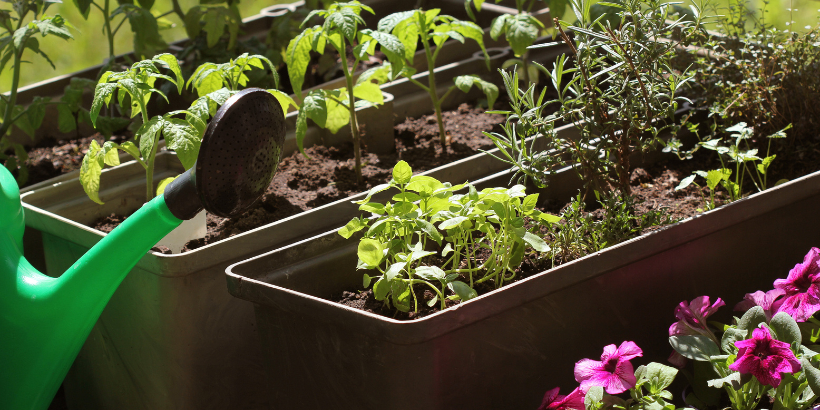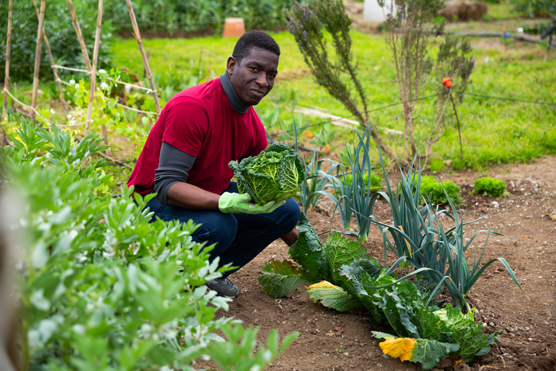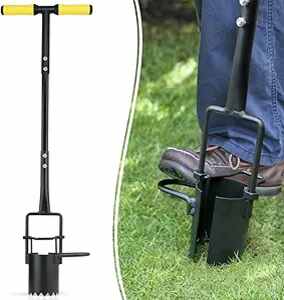Seasonal Gardening Tips: What to Plant and When for Best Results
Seasonal Gardening Tips: What to Plant and When for Best Results
Blog Article
The Comprehensive Overview to Horticulture: Discover the Benefits of Different Designs and Approaches
Horticulture includes a diverse array of designs and strategies, each offering unique benefits customized to private choices and ecological contexts. From the organized style of formal gardens to the natural beauty of permaculture, understanding these variations is essential for growing an area that not just prospers yet likewise mirrors individual worths and looks. Sustainable methods play an important role in boosting local communities and guaranteeing lasting success. As we explore these different styles, it becomes evident that the selections made can dramatically influence both the yard's wellness and its contribution to the surrounding setting.
Recognizing Horticulture Essentials
Recognizing the basics of horticulture is necessary for growing a thriving and lasting garden. A successful horticulture undertaking starts with a solid structure of expertise relating to dirt, plant selection, and climate factors to consider.
Selecting the right plants is similarly important. Understanding their certain needs-- such as sunshine, water, and spacing-- guarantees compatibility with the regional environment and soil problems. This choice procedure must additionally take into consideration the development habits and lifecycle of plants, allowing for a balanced and cosmetically pleasing yard.
In addition, reliable watering techniques are essential. Over-watering and under-watering can both lead to plant tension and condition. Executing a routine based on seasonal changes and plant needs can enhance water performance.
Popular Horticulture Styles
What defines the essence of prominent gardening designs? Amongst the most distinguished styles is the home garden, identified by its casual format and a vivid selection of blossoms and vegetables.
Conversely, the official yard personifies symmetry and order, usually featuring geometric patterns and thoroughly trimmed hedges. This style communicates elegance and class, with meticulously chosen plants that reinforce a structured aesthetic.
The Japanese garden supplies a tranquil and introspective experience, utilizing natural environments like water, stones, and plants to develop a peaceful atmosphere. It focuses on simplicity and equilibrium, motivating consideration.
Additionally, xeriscaping has gotten appeal, specifically in arid areas (Gardening). It prioritizes drought-resistant plants and reliable water use, advertising sustainability while enhancing landscape appeal
Advantages of Container Gardening
Container gardening uses a wide range of advantages that make it an appealing choice for both beginner and experienced gardeners alike. One of the primary benefits is versatility; containers can be placed in different areas, enabling gardeners to optimize sunshine exposure and produce visually enticing plans. This versatility makes it feasible to yard in areas where conventional in-ground horticulture might not be possible, such as terraces, outdoor patios, or city atmospheres.
In addition, container horticulture offers better control over soil problems. Gardeners can customize the dirt mix to fit certain plants, ensuring optimal drain and nutrient schedule. This is specifically advantageous for people residing in locations with poor or polluted soil.
Another significant benefit is the reduced risk of insects and article conditions. Container plants can be checked much more easily, and any kind of concerns can be resolved promptly. This approach can lessen the spread of invasive species.
Sustainable Horticulture Practices
Lasting horticulture practices are crucial for promoting ecological wellness and their explanation improving biodiversity in our ecosystems. These methods focus on ecological equilibrium, resource preservation, and making use of natural methods to lessen negative ecological effects. By using techniques such as composting, garden enthusiasts can decrease waste while enhancing soil health and wellness, therefore promoting a thriving yard ecological community.
Water conservation is an additional critical element of sustainable horticulture. Techniques such as rain harvesting, drip irrigation, and making use of drought-resistant plants can substantially lower water usage while guaranteeing that plants obtain appropriate dampness. Furthermore, incorporating indigenous plant species right into garden designs sustains regional wild animals and reduces the demand for chemical fertilizers and pesticides, which can be damaging to the environment.

Ultimately, sustainable gardening methods not just add to healthier yards yet also promote an even more resilient atmosphere, providing long-lasting benefits to both the gardener and the surrounding community.
Tips for Effective Horticulture
To grow a More Bonuses successful yard, garden enthusiasts need to prioritize cautious planning and thoughtful implementation of their horticulture techniques. Begin by evaluating the regional climate and dirt problems, as these variables considerably affect plant choice and growth. Select plants that are appropriate to your atmosphere, thinking about indigenous varieties that will certainly love very little intervention.
Carrying out a well-structured layout is critical (Gardening). Make use of friend planting methods to advertise biodiversity and all-natural bug control, while ensuring each plant has appropriate room for growth. This not only enhances looks however additionally enhances general plant health and wellness
Routine upkeep is vital to an effective yard. Establish a consistent schedule for watering, weeding, and feeding. Mulching can assist maintain wetness and suppress weeds, while likewise adding raw material to the dirt.
Frequently keeping an eye on plant wellness and development will certainly allow for timely interventions. Be open to finding out and adjusting; horticulture is a continuous process that benefits from experience and trial and error.
Verdict


In recap, the expedition of varied horticulture designs and approaches discloses their complex advantages, adding to both visual allure and environmental health and wellness. Container gardening offers versatility and ease of access, while lasting practices improve environmental stewardship. By integrating numerous techniques and approaches, gardeners can enhance their efforts, promote biodiversity, and develop functional outdoor areas. Eventually, this detailed overview acts as an important source for growing successful horticulture experiences, promoting a much deeper connection with nature and the surrounding ecosystem.
Report this page